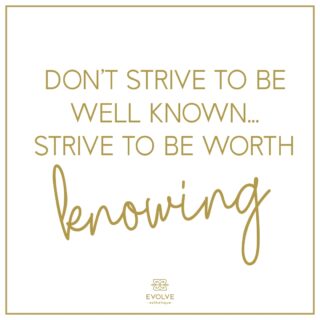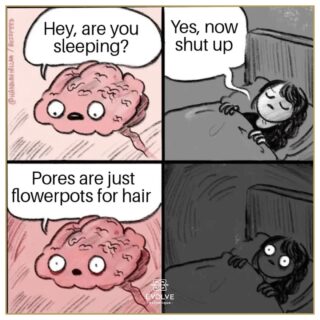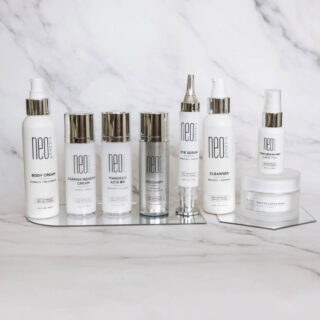ACNE 101
Breakouts are what drive many women and men into the field of aesthetics. This is one of the many reasons your esthetician can be your biggest ally in the battle against your breakouts. Your esthetician generally allocates 60-90 minutes for a treatment, which is a lot of time to gather information, “trouble shoot” and ultimately help you identify and reduce environmental and incidental triggers.
What is an integrative approach to acne?
I take an integrative approach to treating acne, which is also an education in a healthier lifestyle. Not everyone is interested in an integrative approach, which I totally understand, and for those clients I definitely encourage them to find a provider who will be a better fit.
What is acne?
Acne is a condition caused by retention hyper-keratosis. In lay-person language, a healthy pore will shed one layer of dead skin cells per day and the acne-prone pore will shed 5 layers of dead skin cells per day. Dead skin cells in the acne prone are also stickier than the none-acne prone, which impairs the natural sloughing process. The volume of skin cells being shed and the sticky consistency of those cells make it impossible for the skin to keep up. This buildup of dead skin cells can create congestion in the form of unsightly blackheads, whiteheads, or acne.
*Side note: Dehydration in the skin can exacerbate this condition. Hydration is really important for everyone and especially the acne prone. See my blog on hydration for more information.
The P. Acnes Bacteria: villain or hero?
While P.Acnes have a bad reputation, it is important to understand that they are a naturally occurring part of your body’s microbiome. Since the acne-prone pore will shed up to 5 layers of dead skin cells per day, the buildup of dead skin cell prevents oil from naturally flowing out of the follicle and on to the surface of the skin. The pore opening is where P.Acnes consumes triglyceride oil (sebum) and convert it into free fatty acids. The release of free fatty acids onto the surface of the skin is responsible for creating the acidic pH of your skin’s acid mantle.
The acid mantle is a hydro lipophilic barrier (water/oil) and it is your body’s first line of immune defense. The conversion of trigycerides and subsequent release of free fatty acids onto the surface of the skin ensures the stability of your skin’s natural pH, which ensures a healthy and strong barrier. In this respect, P.Acnes are heroes.
The malfunction of shedding cells inside the pore, and the overabundance of free fatty acids (found in oilier skin types) are problematic because they can have a pro-inflammatory and comedeogenic effect on the skin. A blocked pore causes P.Acnes to venture inside the pore to feed and it’s the free fatty acid byproduct inside the pore that triggers inflammatory responses, such as the swelling that accompanies pimples, nodules or cysts. In this respect, they are villains.
The key is to create balance.
Different types of acne
Why are some people prone to developing blackheads or whiteheads, while others are prone to pimples, and others have the privilege of managing the entire sha-bang? Genetics plays a big role in the type of acne you experience and everyone does not experience inflamed acne lesions. Inflammation is an inherited condition of the skin. Thanks, Mom & Dad!
Topically managing acne
The topical approach to treating acne prone skin is to use products that are designed to penetrate the pore to prevent skin cells from building up and creating a plug at the opening of the pore. Common ingredients used in the treatment of acne include: Salicylic Acid, Mandelic Acid, Benzoyl Peroxide, and Vitamin A (retinaldehyde, retinol, all trans-retinoic acid). Less popular ingredients supported by corneotherapy research include: Vitamin B6, Zinc Sulfate and Azelaic Acid. Topical management of acne usually requires professional guidance as severity of breakouts dictates which ingredients are recommended for treatment.
Is acne from horomones?
Hormonal changes in the body or hormonal sensitivity within the body can trigger breakouts. Hormonal fluctuations in the body caused by stress, dietary aggravators, sugar consumption, medications, recreational drug use, or by inherited conditions like PCOS trigger acne breakouts. Stress is commonplace in our western world and we all know that it’s detrimental to our health, but accept that it is unavoidable and often overlook or ignore the effects it has on our body. In relation to acne, stress elevates cortisol in the body. Cortisol is a steroidal hormone that stimulates the sebaceous gland to produce more oil, which increases acne lesions in the acne prone. Sugar found in alcoholic beverages and hidden in processed food also impacts our hormones. Excess sugar causes insulin spikes in the body, which stimulates the production of androgen hormones. Androgen hormones stimulate the production of oil and cause acne flares in the acne prone. Some of our hormonal triggers are inside our control while others are not and this is where lifestyle choices become important in the life long management of acne in the acne prone.
Lifestyle Considerations
Lifestyle factors and choices can accelerate or impede progress with breakouts. Most people who are unwilling to make lifestyle modifications are generally better suited for a conventional approach to treating breakouts (antibiotics and topical prescriptions).
Food recommendations are a general guideline. I encourage all of my clients who suffer from persistent breakouts, especially as adults, to track their food intake in a journal. This creates an opportunity for the clients to become their own investigator and subsequent advocate. Food modification seems to be the hardest for most people and I understand the comfort and attachment many of us have to the foods we enjoy eating. Foods that are naturally higher in androgens and iodides are problematic for the acne prone individual. Examples of androgen and iodide rich foods include: peanuts, peanut butter, corn oil, canola oil, milk, whey, soy and cheese. Yikes, I know. Like I said, lifestyle modifications can be the hardest part of this integrative journey. In general, a low-glycemic diet will support the health of your skin.
Birth Control pills, IUDs, implants, and shots are used to prevent pregnancy, and for some to manage hormonal breakouts. If you are taking birth control and have observed that your breakouts are worse, or if you never experienced breakouts and are now struggling with acne, speak with your doctor and ask them to select a form of birth control that is higher in estrogen and lower in androgen potency.
Personal care products are also laden with potential pore clogging ingredients. From your dryer sheets to your shampoo to your hand lotion, unwittingly using products that contain pore-clogging ingredients can sabotage the best acne strategy. I have a lot more information available for clients who are interested and willing to address lifestyle considerations. Submit an inquiry and I will be happy to speak with you.
How do you clear up acne?
The path to clear skin is a personal one and people’s choices are usually governed by time, money, and ease of available resources. As my father says, “there is more than one way to skin a cat,” and this is also true for how you chose to approach your breakouts. There is no “right” way BUT there are a lot of mistakes and missteps in self-treating, as well as expensive trial-and-error when going it alone. Maybe you’ve been to a dermatologist and haven’t had success. Don’t give up. Find another dermatologist or try a different path. The same can be said for not having success with one esthetician. We are all different and many of us are eager to help you solve your skin problems!

 Loading...
Loading...









































Leave a Reply